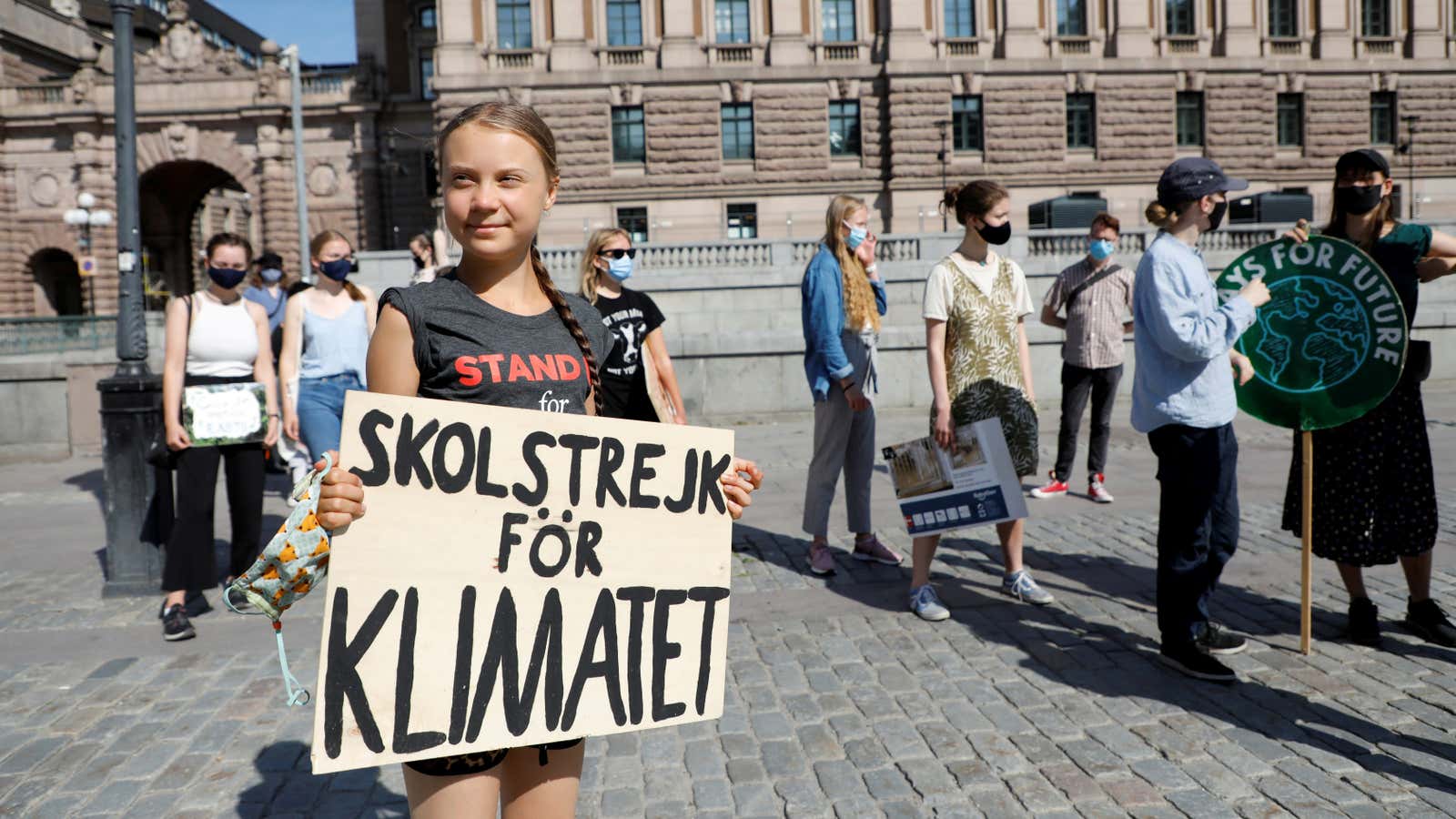On Sunday (Aug. 8), Greta Thunberg appeared on the inaugural cover of Vogue Scandinavia. The same day, she was calling out fast fashion’s impact on the environment to millions of her followers on social media.
The 18-year-old Swede, who has become a prominent global voice for climate activism, said shoppers who buy fast fashion are encouraging the industry to continue its “harmful process” in her interview with the magazine (which will only publish online in a bid to be more sustainable itself). Thunberg also posted the cover photo on Instagram, where she has 12 million followers, and accused the industry of misleading consumers with its marketing about sustainability efforts.
“Many are making it look as if the fashion industry are starting to take responsibility, by spending fantasy amounts on campaigns where they portray themselves as ‘sustainable’, ‘ethical’, ‘green’, ‘climate neutral’ and ‘fair,'” she wrote. “But let’s be clear: This is almost never anything but pure green washing. You cannot mass produce fashion or consume ‘sustainably’ as the world is shaped today.”
Thunberg told Vogue Scandinavia she understands that shoppers want to buy fashion so they can express themselves and their identities. Many young shoppers are turning to secondhand clothing to solve the problem, while Thunberg has her own way of refreshing her wardrobe. “The last time I bought something new was three years ago and it was second-hand,” she said. “I just borrow things from people I know.”

Is fast fashion inherently unsustainable?
Fast fashion, which is based on a low-cost, high-volume business model, has come under fire in recent years for its impact on the environment and workers in its supply chain. To produce all the clothing it sells globally each year, the industry consumes huge amounts of resources, the manufacture of which pollutes waterways and emits large quantities of greenhouse gases. Much of the clothing ultimately ends up in landfills.
Companies such as H&M, Zara, and others have made efforts toward operating more sustainably by increasing their use of organic and recycled materials, working to reduce their carbon footprints, and collecting garments for recycling. H&M even recently issued bonds tied to sustainability targets.
But efforts such as textile recycling have yet to scale, while critics of the fast-fashion model say its biggest problem is the sheer volume of clothing it makes. That volume isn’t declining. In 2019, before the pandemic reduced its sales, Inditex—parent company of Zara, which is by far its largest brand—said it placed more than 545,000 tons of clothing on the market (pdf). The figure was about 45% more than the amount it reported for 2015. The amount of clothing fast-fashion companies produce is only set to grow as shoppers in nations such as China and India begin to consume clothing more like their counterparts in the US and Europe.
Lately more voices, including designer Stella McCartney (paywall), have been arguing government regulation, not just industry commitments, will be necessary to mitigate fashion’s environmental harm.
